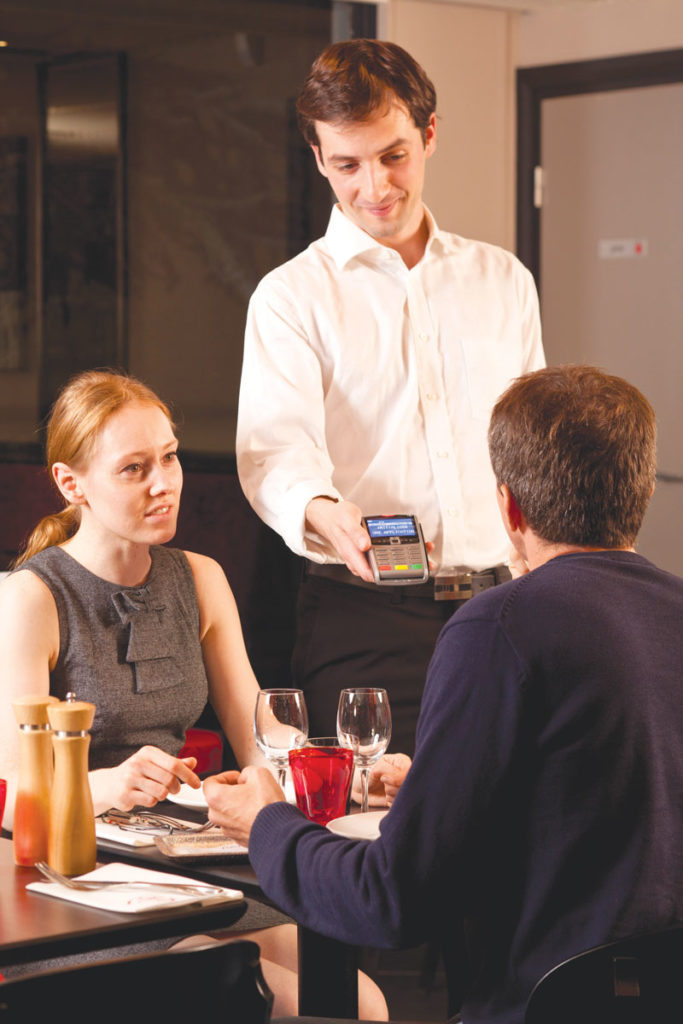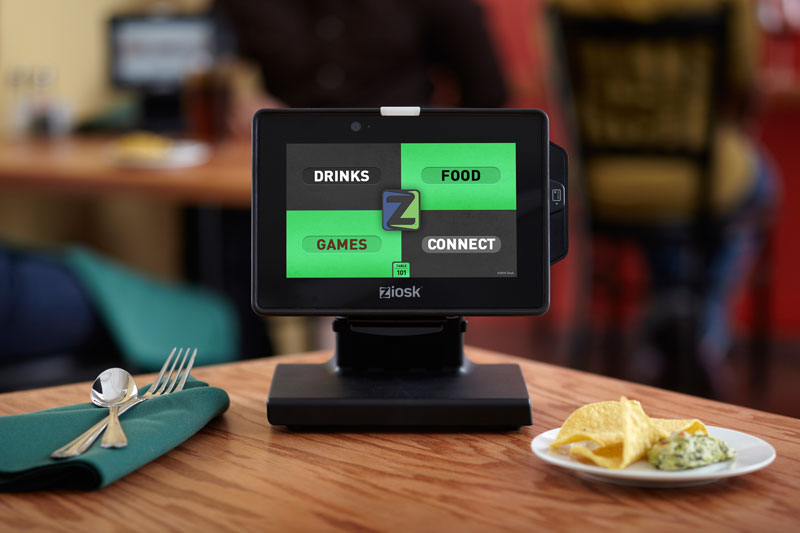The days of sitting in a restaurant sipping wine and chatting for hours are, unfortunately, going the way of the dinosaur. As is evident from the growing number of quick-service restaurants, more and more consumers are on the go and looking for the fastest, most convenient way to close out their bill and set off on their next errand (technology in tow). And let’s face it: The least fun part of any dining experience is paying the bill—figuring out the tip, waiting to sign the credit card receipt, etc.
In Europe, restaurateurs have been letting customers pay at the table for years. A quick swipe of the card, and the guest is on his way. So why haven’t American operators jumped on the bandwagon? “Restaurants tend to be slow adopters of new technology,” says Dr. Sherri Kimes, professor of operations management at Cornell University School of Hotel Administration and co-author of the 2014 study “Ready and Willing: Restaurant Customers’ View of Payment Technology.” That study surveyed 1,297 consumers about payment technologies and found that, compared to traditional settlement processes, the respondents rated customer-facing payment technologies as giving them more control of the payment process, greater convenience and more privacy. “We all love convenience,” Kimes says. “Anything restaurants can do to provide convenience and save time is a good thing.”
B. Hudson Riehle, senior vice president, Research and Knowledge Group, at the National Restaurant Association, agrees. “Reallocation of labor allows greater consumer satisfaction when they aren’t waiting for a check, waiting to reorder beverages, etc.,” Riehle says. He adds that the restaurant industry had its sixth year of positive growth in 2015, and the integration of technology was an important driver. “There are 14 million individuals employed in the labor-intensive restaurant industry,” Riehle notes. “It’s important that guest expectations are met in a timely and convenient manner, and it’s only natural to have technology available to help with productivity and efficiency.”
We know that consumers enjoy—and want—the ability to pay at the table, so what’s keeping you from adopting this strategy? We’ve identified five moneymaking benefits of integrating pay-at-the-table technology at your pizzeria:
Increased Customer Satisfaction. While operators sometimes worry that technology will take away from the personal touch, studies show restaurant guests want it anyway, Kimes notes. “When a customer finishes his meal, all he wants to do is leave,” she says. “Even if the restaurant is slow, there’s still an increase in satisfaction and an increase in customer service if the customer is not made to wait.” According to the National Restaurant Association’s annual forecast, four out of five customers surveyed believe that technology increases convenience, while 70% believe it increases order accuracy.
More Table Turns. On a busy Friday or Saturday night, giving customers the ability to close out their own tab dramatically speeds up table turns, according to John Regal, CMO at Ziosk, a provider of tabletop tablets that allow guests to order, pay and earn rewards at the table. “We’ve been working with Uno Pizzeria & Grill for three years, and 80% of credit card transactions go through Ziosk tablets,” Regal says.
 |
|
European restaurants have been letting customers pay at the table for years. Now UK-headquartered Ingenico Group has launched a |
Increased Security. Customers are increasingly concerned about credit card fraud at restaurants. “I don’t want to give my card to some random person who walks away from me,” Kimes says. “There are so many credit card breaches now, and consumers like the security of holding onto their card.” With that in mind, Regal advises operators to make sure the system they are using is PCI-certified. “It’s vital that all of your transactions are handled securely through a PCI-certified system,” he says. “Not all are done securely.”
Increased Ordering. If you’re able to offer ordering at the table in addition to payments, you’ll find that guests order more food and beverages. “A tabletop device gives a lot of control to guests,” Regal points out. “They can order more drinks, appetizers and desserts as well as provide 30 times more feedback about their experience.”
Higher Tip Averages. There are several reasons pay-at-the-table technology leads to higher tip averages. With servers free to focus on customer service instead of running credit cards, customers tend to receive more personalized service, Kimes says. Additionally, payment applications normally suggest a standard tip amount of 15% to 20%; although that may be more than a customer is accustomed to leaving in cash, many will agree to the suggested tip because virtual money doesn’t feel as “real” as paper money.
Riehle says the rising popularity of pay-at-the-table technology is a long-term trend, not a fad. “Overall, the basic consumer expectation is that their experience will include technology,” he says. “While the decision of how to integrate that technology is very specific to each business model, successful operators will have a greater reliance on technology going forward.”
Kimes agrees, adding, “I believe this technology is still pretty young, but in the next year or two I think we’ll see a lot more pay-at-the-table options.”
| There’s an App for That |
| Even if you’re not ready to accept virtual payments, you need to familiarize yourself with the options. Popular apps include Dash, TabbedOut, Pay With OpenTable, Cover, PayPal Pay at Table, and Apple Pay. If you use a POS system in your pizzeria, check with your provider to see what they offer in terms of pay-at-the-table service. It may be time to take a serious look at integrating the offering into your pizzeria |















